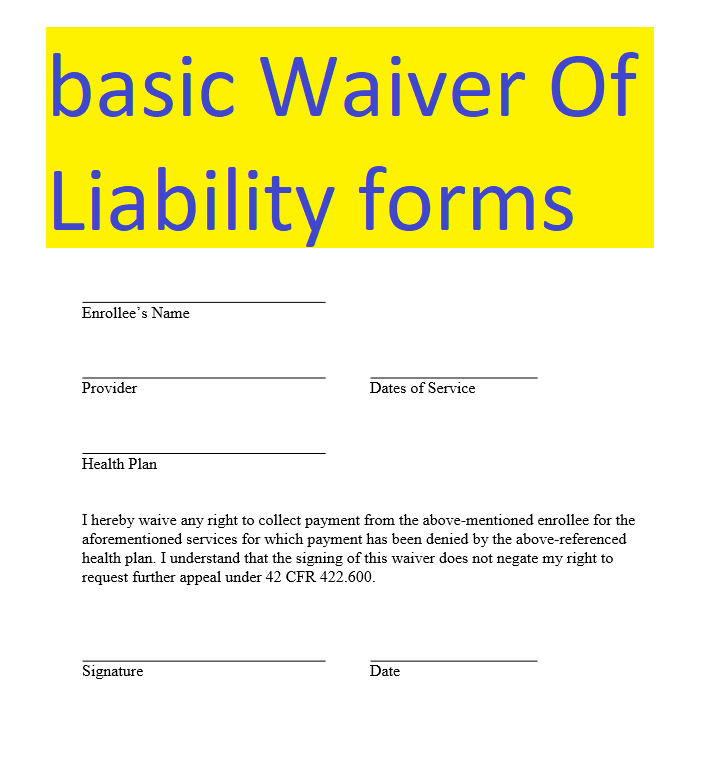Waiver of liability is a legal contract between 2 parties. It takes into account the risks involved in a particular activity. A member of one party assumes the risk and agrees to waive the company’s liability for damages that are related to the dangers. The limitation of liability protects the company from losses if the participant has suffered injuries or damages.
Release from liability template are advance agreements. The signatory may be responsible for damages or injuries. For example, if a company provides bungee jumping or skydiving services, a waiver releases the company from liability for any damages. This means that if a person is hurt while skydiving, he or she agrees not to proceed against the instructor or the company owner.
What is included in the disclaimer form?
Liability waiver form vary by company and industry, but they have common elements. The most important information that is included on the waiver form is:
- A caution to parties is a special statement to readers at the top, highlighted in a special font.
- Risks of activity – it is important to specify a list of risks associated with the activities of the company in the form.
- Voluntary acceptance of risk – the provision that the party is fully aware of all the risks and voluntarily accepts them.
- Compensation for damages – these items are confirmations that are made by the participants. They agree to pay court costs and attorneys’ fees if their actions result in someone who sues the company.
- Insurance – this clause should state that the liability insurance policy does not cover losses of the participants.
- Release clause – a statement that the company is not liable in the event of harm or loss.
- Choice of Law – This section indicates the laws of place and court under which the legal disclaimer is recognized. The contract parties may live in different regions, and this section helps eliminate confusion about the applicable rules and regulations.
At the end there is the reader’s signature. It indicates that the party has read the form and agrees with it.
How to write a waiver of liability?
Writing a release of liability form may seem like a simple task. But the provisions that it will specify may be governed by other federal laws. Knowing the process of writing a contract can effectively reduce the possibility of legal errors and mistakes in contracts.
When preparing this form, you need to follow these points:
- Identify all risks.
- Make a list of interested parties.
- Consider possible threats.
- Collect insurance policies.
- Determine the governing laws that will apply to waivers.
- Make an appointment with contract lawyers for a consultation.
- Bring conclusions and notes to the first meeting.
- Obtain a first project of the liability waiver.
- Approve the project.
- Ask interested parties to sign waivers as needed.
- Keep copies of signed waivers of liability and all supporting material.
In addition to a written waiver with an attorney, you can ask about the procedure for signing a contract.
Creating a form with the PandaDoc program
To get everything right, you don’t have to do any waiver software, because with the PandaDoc platform you can instantly create the necessary agreements and contracts. This is a program that has proven itself in many European countries. It helps users simplify all tasks related to document management. The portal offers a number of tools at favorable offers. But in advance customers can take advantage of a trial period, which allows them to decide which package will be the best option. It is possible to work over a network, giving access to several employees at once. The PandaDoc service will become an irreplaceable assistant for people who work with large volumes of documents.

